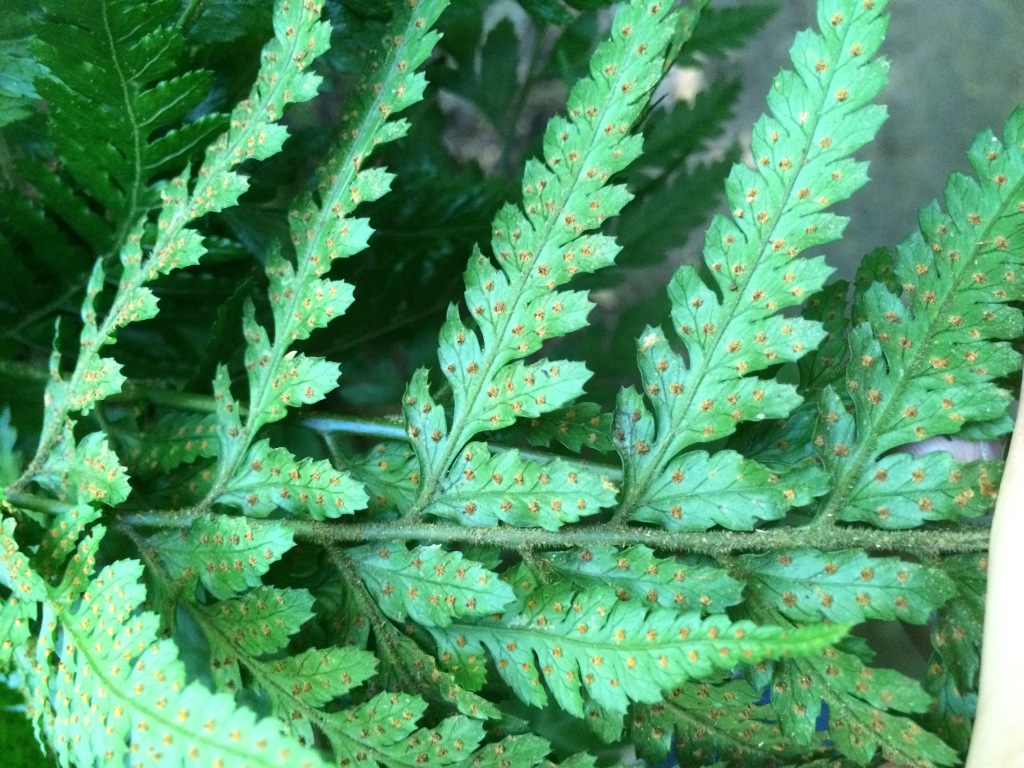Lastreopsis acuminata
(Houlston) C.V.Morton Shiny Shield-fernRhizome almost erect, short and thick, covered in narrow, dark brown scales; old stipe bases persistent. Fronds tufted, erect, 30–90 cm tall. Stipe usually longer than lamina, glossy, pink to purplish-brown, a few scales near base. Lamina 2-(less commonly 3)-pinnate, narrowly triangular with long-tapering apex, light to dark green, shiny, glabrous except for a few hairs along veins; rachises with abundant fine hairs. Pinnules asymmetrically oblong with blunt to acute tips, margins broadly toothed, often with larger basal lobe. Indusium dark brown, lacking glands.
GleP, VVP, GipP, OtP, WaP, CVU, GGr, EGL, EGU, WPro, HSF, HNF, OtR, Strz, MonT, HFE, VAlp. Also SA, Qld, NSW, Tas. (including Bass Strait islands). Widespread in moist forests (both cool- and warm-temperate rainforest), often near creeks and in gullies, and sometimes the dominant ground layer species. Usually terrestrial but sometimes epiphytic on tree-ferns. Only once (1949) reported from Grampians.
Pinnae are variable in shape: leaflets can be entire, scalloped or sharply toothed and pinnae often have long, tapering tips. However, fronds are always tufted and the lamina is shiny, glabrous (except for veins and rachises) and usually 2-pinnate.
Entwisle, T.J. (1994). Ferns and allied plants (Psilophyta, Lycopodiophyta, Polypodiophyta). In: Walsh, N.G.; Entwisle, T.J., Flora of Victoria Vol. 2, Ferns and Allied Plants, Conifers and Monocotyledons, pp. 13–111. Inkata Press, Melbourne.
 Spinning
Spinning


